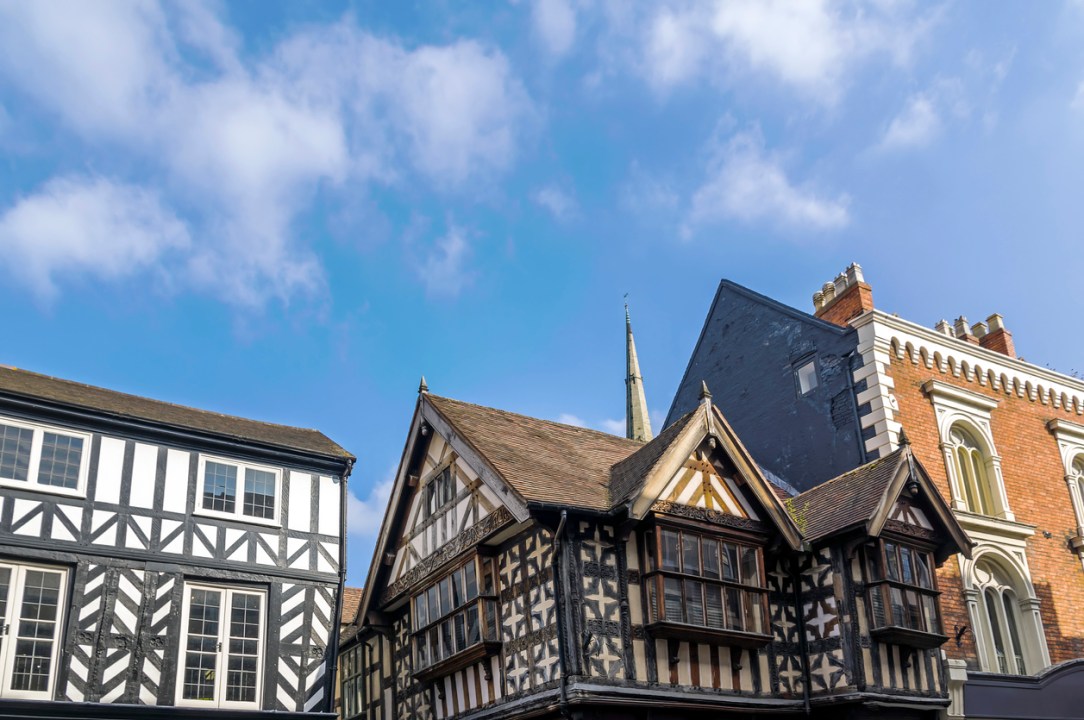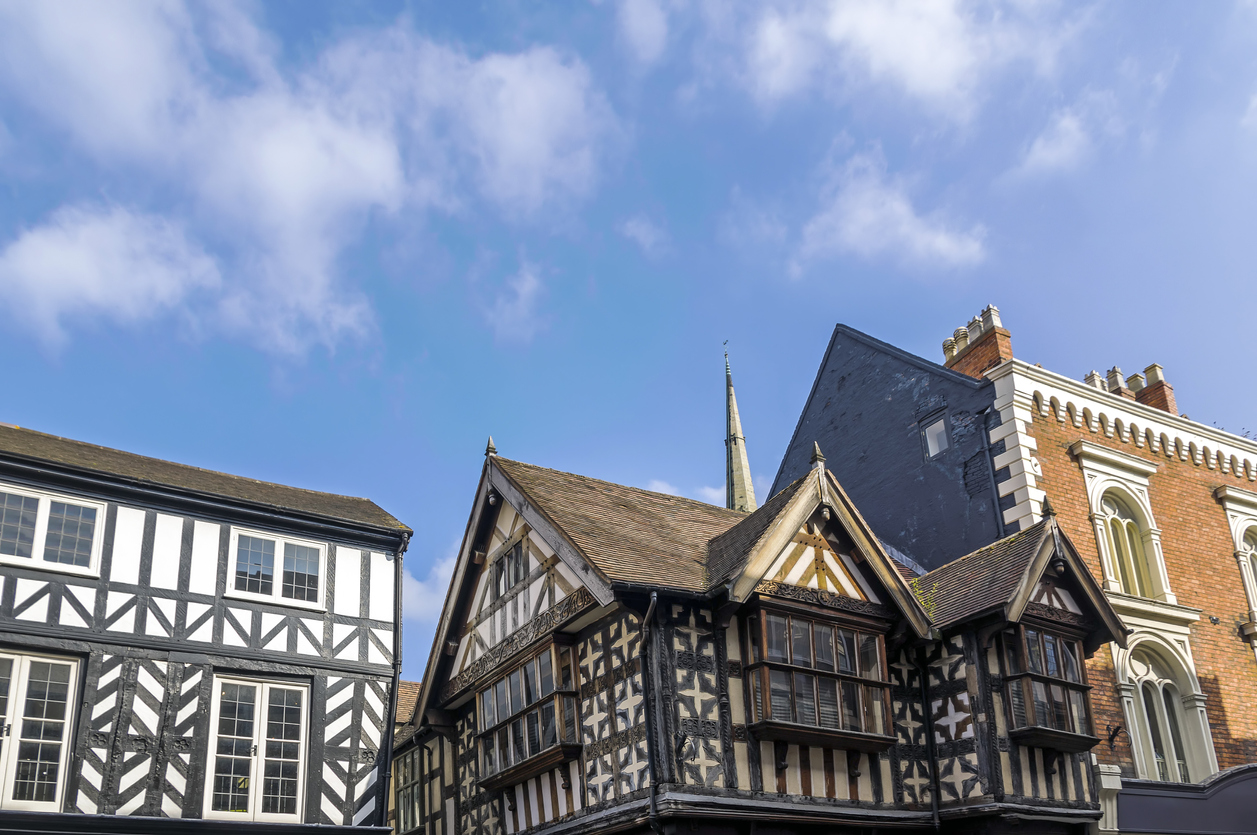I’m in a car embarking on a road trip through one of the great foodie regions of the world, charged with the onerous task of scoffing and boozing my way through five days of epicurean heaven. But where am I? Trundling along the Rhone valley from Lyon to Provence? Barrelling down the autostrada to Bologna?
No, I’m on the A458 just outside Shrewsbury. Because this is a tour of the Welsh Marches, England’s foodie frontier, from Shropshire through Herefordshire to Gloucestershire, where a food and drink revival over the last three decades has turned this lush, fertile, famously green corner of Britain into a gastro-destination as good as any in Europe.
My first stop is the Haughmond, a hotel/gastropub with a cute attached bakery, in the village of Upton Magna. It comes highly recommended, and the rave reviews are not wrong. After a punchy aperitif in the sunlit garden, dinner boasts scorched salmon on a bed of sweet pickled sorrel and it emphatically puts the mmmm in umami. The award-winning breakfast is arguably even better: the omelette with smoked haddock, black bomber cheddar and whipped egg is – no joke – possibly the single best breakfast dish I have ever had, right up there with the scrambled eggs in a special copper pot I once had at Joel Robuchon’s hotel-resto in Monte Carlo. And I’m in Upton Magna.
A food and drink revival has turned this famously green corner of Britain into a gastro-destination as good as any in Europe
Next stop: Shrewsbury, after a quick detour round the romantic ruined ribs of Haughmond Abbey. For some reason I’ve never been to Shrewsbury and a brisk walk tells me the loss is mine: it is leafy, historic and handsome, and packed with bijou bakeries, indie boutiques, Georgian nooks and a brilliant food market replete with Asian pop-ups, organic wine merchants and generational cheesemongers (ignore the hideous 60s exterior). It also has a venerable abbey, a gracious classical bridge that leaps the Severn, and a magnificently Olde Englishe shopping street called Wyle Cop with a hotel – the Lion – which once hosted Dickens, Paganini, William IV and opium eater Thomas de Quincey.
Down at the bottom of this same charming, telegenic hill is the tumbledown, ramshackle, Gormenghast-y, Tudor-bethan, 180-year-old wine merchants called Tanners. Ask for a tour of their remarkable cellars and attics, including a trillion-year-old dining hall complete with ‘apotropaic’ markings for warding off witches. Then recover your wits with a glass of cold Greek assyrtiko white in their pretty courtyard.
Onwards to Ludlow. Of all my foodie stops, Ludlow is likely the most culinarily famous as, for a while, it hosted more Michelin stars than any UK town outside London. For disparate reasons the stars have dispersed, but this prettiest of English towns – Pevsner thought some streets were ‘the most memorable in England’ – is still chocka with chocolatiers and rammed with jam-makers and bulging with best-of-class beermakers (check out Ludlow brewery, in a disused railway house, for excellent craft beer and notably good sausage rolls).
Moreover, one of the old Michelin restaurants has now been turned into a boho-luxe self catering place, Dinham Weir House, situated spectacularly on the river Teme (where townsfolk swim, deep into the late summer gloaming). The house sits between the castle on the hill behind and the deep, deer-filled forests to the fore. And as you sleep in one of their rooms you can hear the Teme tumbling, which sweetly echoes the original name of Ludlow: it derives from the Anglo-Saxon hlud – loud – plus hlaw – hill. The loud river under the hill. Perfect.
The self catering is also, it should be noted, optional: if you prefer they have a resident private chef, Harry Bullock, who started cooking aged about 13 and charmed his way into a job at Raymond Blanc’s kitchen at 17. He is, to no one’s surprise, properly good.
And now to Herefordshire (or at least the borders of Herefordshire and Worcestershire) for a very special restaurant, Pensons. This is Michelin starred. The chefs and the staff are like medieval clerics handling saintly relics – you can watch them cook as you dine. Despite the devotions, the tasting menu – much of it sourced from the bucolic and abutting Netherwood Estate – is anything but austere: pork with apricot, girolles, mustard, sage; mackerel with celeriac, kohlrabi, tomatillo, chilli. It is forensically fine.
Don’t miss their inventive cocktails in the decorous courtyard beforehand: they do brilliant things with elderflower. And check out the fittings: linens are woven on the mill next the farmyard, a local blacksmith fashions some of the knives, local potters create the plates. And the glorious Herefordshire cider comes from Little Pomona, a charming cidermaker a few miles away, who also conjure, from their own lush orchards, agreeably archaic drinks like perrikin and ciderkin, and do tastings cleverly pairing them with regional cheese and charcuterie. Try not to be the designated driver.
Try not to be the designated driver
The next stop takes me right across Herefordshire (‘the most unspoiled county in England’ – Pevsner again), to one of my favourite places in the world. The Golden Valley, where England truly butts up against Wales in a beauteous riot of lush woodland, upland rivers, shattered abbeys, Norman castles, mist-shrouded churches, mystical priories, shelagh na gigs, excellent fishing, great bespoke gin makers (Black Mountain Botanicals), and poetically remote gastropubs: like the newly refurbed Bull’s Head in Craswall.
The pub, once threatened by dreadful Crooked House types, has been rescued by a determined team of local boys – chef, farmer, builder – and now this old drover’s inn, in the lee of the Black Hill, hidden in its glorious emerald dale, serves up delicious, locavore pub tucker like breaded lamb with sauce gribiche, and their own-made fennel-infused salami and bresaola, yet it deliberately retains the air of the local it always was: the cobbled bar is a place where, one imagines, shepherds, cowherds, wise-women, whiskery beef farmers, and horny Victorian parsons might fetch up for a gossipy jar any moment.
Last leg – Gloucestershire – via the 15th century manor house of Wythall Estate near Ross-on-Wye, one of the oldest houses in England which never sold out of the family. The wine they make here (from their own sloping vineyards out the back) is proof, if you still need it, that Britain is now making superb whites, as well as great fizz. It is not cheap; it is top-notch.
Flushed with patriotic pride, as well as impressive wine, I drive my final route along the Wye valley, into the rustling Forest of Dean. Hidden away here, between the ancient coal mines and the snorting wild boars, I find the quaint village of Clearwell, and the Tudor Farmhouse Hotel. The chicly boutique place is pretty as an influencer’s picture on Instagram, and the food, predictably, is ace: roasted Gloucester old spot pork belly with unctuous truffle mash? Yes please.
The sun is dying over the forest. The laughter drifts across the hotel garden. I pat my happily satisfied stomach and realise I’ve had maybe seven great meals on the trot. And how often can you say that, anywhere in the world?
For more information try visitshropshire.co.uk and visitherefordshire.co.uk. For car hire try Avis: avis.co.uk (0808 284 6666)







Comments